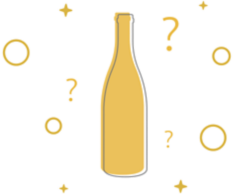There are many reasons to explore the modern non-alcoholic drinks space. For one, these days the category is big business, which has resulted in an ever-expanding variety of products from NA wine to zero-proof spirits. There’s never been a better time to begin navigating these options, given the rise of NA bottle shops and sommeliers who are themselves going sober.
One needn’t be completely abstinent from alcohol to enjoy NA drinks, although people—especially young adults—are increasingly taking that path. Perhaps you’re simply reevaluating your relationship with alcohol, or looking for a change of drinking pace. Whatever your reasoning, the fact remains that there are a ton of products to sort through.
When it comes to NA wine, many drinkers have similar questions: What exactly are non-alcoholic wines? And how do you find the best ones? Read on for our simple guide to this expanding category, plus bottle recommendations from Wine Enthusiast professionals and fawning customer reviews.
What are Non-Alcoholic Wines?
There are two main types of non-alcoholic wines. There are wine alternatives, which resemble wine in flavor and texture, but do not contain alcohol, and dealcoholized wines, which are traditionally-made wines with their alcohol removed.
With regard to the latter, according to the Food and Drug Administration, wines labeled “alcohol-removed” and “dealcoholized” are only used when a wine goes through a specific process to remove most or all of the alcohol present. Such a bottle might also have the terms “zero alcohol” or “alcohol-free” on its label.

How are Non-Alcoholic Wines Made?
There are four methods approved by the Bureau of Alcohol, Tobacco and Firearms for removing alcohol from wine, reports the Institute of Food Technologists. Alcohol can be removed through thin-film evaporation (called vacuum distillation), reverse osmosis, spinning cone distillation and thermal gradient processing. But the two most common ways are vacuum distillation and reverse osmosis.
In vacuum distillation, the beverage is heated to the point where the alcohol evaporates. During the practice of reverse osmosis, wine is run “through a filter, and the filter separates the alcohol based on the size of the molecule,” the chairman and CEO of one non-alcohol beverage production told Wine Enthusiast. “Alcohol is a bigger molecule than water, so you can literally run it through like a microscopic strainer and filter the alcohol off.”
In comparison, wine alternatives are designed to mimic the flavor, texture and experience of wine by using a variety of ingredients other than wine. Some options may include tea, kombucha or other fruit juices. Some wine alternatives simply feel like a nice booze-free beverage, while others use winemaking techniques to replicate the experience of tannin, flavors and acidity of wine. There’s no shortage of NA wines to try.

